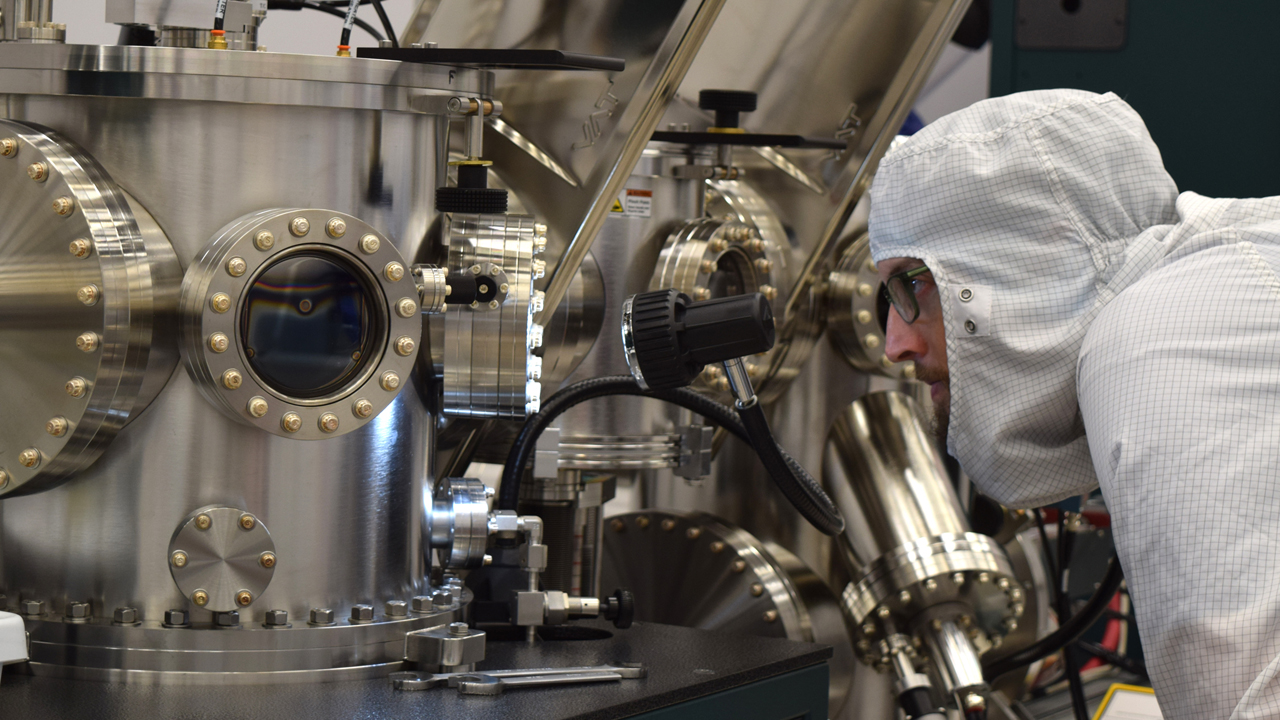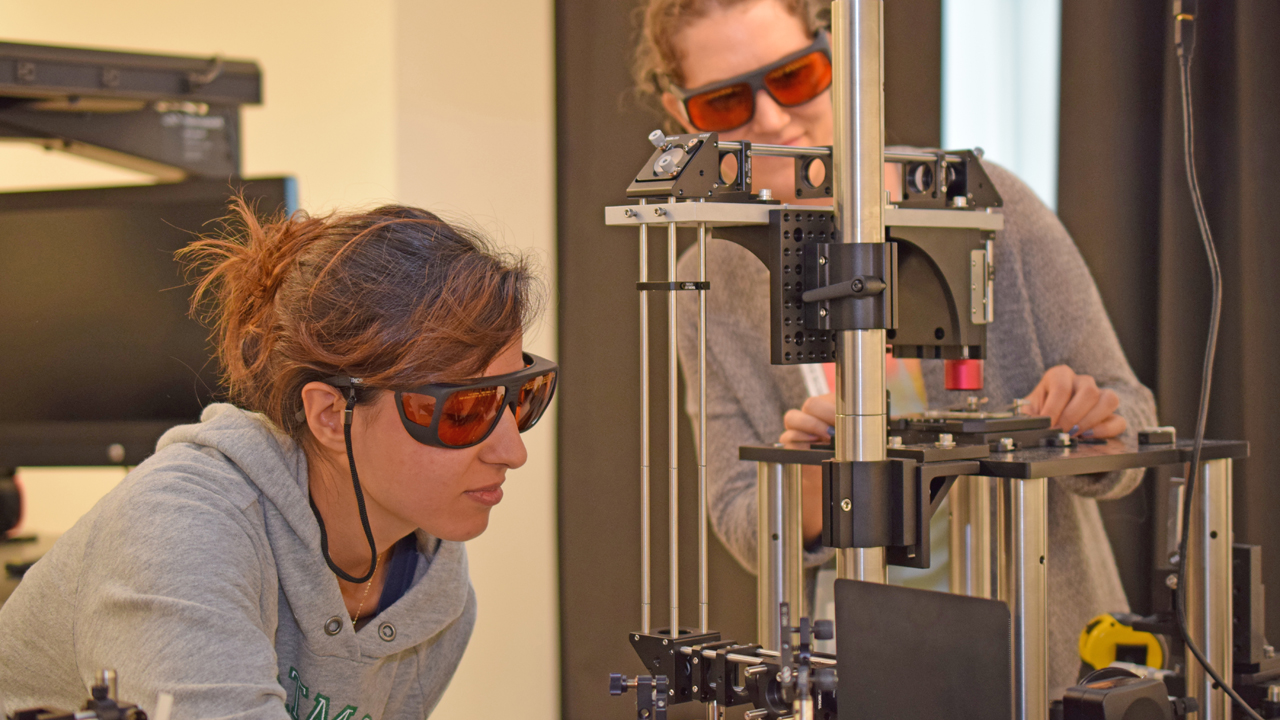
We will establish the ASRC as a valued source of expert knowledge for businesses, government, and the public in its initiative areas and as a leader in transdisciplinary research. The ASRC will serve as an intellectual magnet for visiting scholars, early career researchers, public sector workforce, and entrepreneurs of the future through its advanced training.
The ASRC is a unique research center with a complex scientific and educational scope. ASRC and Graduate Center leadership recognize that partnerships with external entities will be critical in advancing the ASRC’s mission to carry out leading-edge disciplinary and interdisciplinary research, ensure financial stability, and help build our reputation for innovation and nurturing of talent.
The ASRC has no shortage of opportunities for partnerships and has already engaged in a large number of these. Most of the existing partnerships are driven by individuals or small groups within the ASRC, with some examples of strategic partnering across the initiatives now emerging. During the first five years of operation, many of these partnerships were begun opportunistically, through chance meetings or contact by external parties. Going forward, partnerships should be carefully selected and prioritized, formalized in agreements, and aligned with the ASRC’s mission, its competitive advantages, and uniqueness.
The ASRC is currently engaged in dozens of partnerships of various sizes, intensities, levels of maturity, and scope. Some of these activities are funded and formalized; others are ad hoc and informal. The partnerships involve different sectors: industry, academic, and nonprofit/government. They are geographically diverse, including local, national, and international partners. Several modes of interaction are being explored, including shared use of space and equipment, research contracts and collaborations, and internship and fellowship opportunities. ASRC faculty are also involved in a number of larger, multi-partner consortia.
Existing Partnerships
The ASRC is well positioned to act as an innovation hub for academic-industry partnerships. Existing partnerships include Regeneron, Servier, Ferrero Innovations, BASF, UBS, and 3M as well as several startups. Interactions range from usage of the core facilities to funded research contracts. Several routes have been identified to seek external support to further advance and streamline these opportunities, including the NSF-funded IUCRC (Industry University Cooperative Research Center) planning grant with Columbia and Harvard. We recently received a New York State Center for Advanced Technology grant in the area of sensor technologies, with the specific focus of building academic-industry partnerships. In addition to research and financial advantages, the ASRC can enhance CUNY’s STEM education and research curriculum through internships, ensuring our students’ seamless transition to the workplace. One example of this is our recent work with the BHEF (Business-Higher Education Fund) for environmental data literacy.
ASRC researchers have countless connections and collaborations with academic institutions in New York City, nationally, and worldwide. Academic partnerships are those where multiple beneficial interactions exist that can be leveraged. ASRC faculty engage in a large number of multi-institutional grants, with partners across the CUNY campuses and other universities, national laboratories, and the private sector. Columbia University has been a strong partner to the ASRC because of their proximity and complementarity in research mission. For example, in recognition of the need for access to high-end equipment at both institutions and the desire to maximize complementarity, the ASRC signed a memorandum of understanding with Columbia that provides faculty, researchers, and students with equivalent access to the facilities in both institutions. This partnership presents opportunities for unique education programs, including the NSF Research Experience for Undergraduate grant. As another example, the Neuroscience Initiative partners with the Icahn School of Medicine at Mount Sinai through its Inter-Institutional Center for Glial Biology. The partnership provides access to joint graduate programs open to CUNY and Mount Sinai students and co-sponsored symposia.
The Child Mind Institute has embarked on an ambitious mission “to collect imaging and clinical data from 10,000 young people” from all five boroughs of New York City over an initial five-year period. To accomplish such a large-scale project requires coordination and efforts across multiple sites including Weill Cornell Medicine, Rutgers University, and others. To achieve this mission, the Child Mind Institute partners with imaging facilities across New York City, including the ASRC Neuroscience Initiative MRI Facility, which will conduct a significant portion of the data collection from children from upper Manhattan, the Bronx, and Queens.
The ASRC partners with the New York City Economic Development Corporation (NYCEDC) through multiple programs. ASRC faculty are currently serving on the LifeSciNYC Initiative Advisory Council, advising on a $500 million effort to improve the city’s infrastructure for biotech via the development of talent, space, and financial resources. They are also engaged in the FutureWorks program, which supports nanomanufacturing and entrepreneurial activities of manufacturing community through a series of events and networking opportunities. These activities embed the ASRC within the New York City community, increasing access to knowledge and expertise from industry, centers, and other academic environments. They help ASRC faculty shape the landscape and resources for growth of sciences within the city.
The ASRC partners with the University of Strathclyde, which, in 2015, opened a Technology Innovation Center with many similarities to the ASRC in terms of scientific focuses, (including photonics, nanoscience, and smart cities), mission, and scale. CUNY and Strathclyde have both committed finances to this partnership, and we have funded dozens of student and staff exchanges, two workshops, and arrangements for joint supervision of graduate students and internships. Several joint publications have already resulted from this partnership. The ASRC also partners with faculty at École Polytechnique Fédérale de Lausanne (EPFL) in Switzerland for photonics and nanomaterials research projects. This engagement has two funded programs sponsored by DARPA and the U.S. Air Force Office of Scientific Research. As yet another example of such international collaboration, the ASRC has signed a memorandum of understanding with the Institute of Advanced Studies (iASK) in Közseg, Hungary) to exchange students and expertise on plans for ecosystem-based regional revitalization in western Hungary.
ASRC researchers have taken advantage of the center’s location in New York City to establish collaborations and consortia with local, state, and regional organizations around significant societal challenges. One example has focused on the environmental challenge involving urban soils within New York City, and their importance for urban agriculture, afforestation projects, and ecosystem restoration. These efforts have involved collaborations with city, state, and federal government organizations together with several CUNY campuses, including Brooklyn College, and non-governmental organizations. This work has involved a number of faculty members, researchers, and students and has already produced several significant publications. In neuroscience, the New York Glia Club — involving Columbia University, Hunter College, New York University, Rockefeller University, Rutgers University, Weill Cornell Medicine, and Yeshiva University — has the goal of sharing science and providing a forum of growth and scientific exchange for trainees and faculty. The ASRC is also involved in an international consortium on water resource issues across the planet, which includes international research organizations such as the International Institute for Applied Systems Analysis (IIASA); non-U.S. universities such as Griffith University and the Australian National University; United Nations organizations such as UNESCO and the U.N. World Water Assessment Programme; and the international Water Future Programme. These groups collaborate through joint meetings and research projects with continued plans for collaboration through memorandums of understanding and research grants.


Objectives
To identify new partners from among national and international academic partners, non-governmental organizations (NGOs), governmental agencies, intergovernmental bodies, and the private sector, we will:
- Develop a more formalized process to identify and secure partnership agreements with the ASRC.
- Implement a mapping and monitoring system to record and track these partnerships and their outcomes.
- Formalize academic-industry partnership opportunities through a funded innovation center(s) (e.g., New York State’s Centers for Advanced Technology, National Science Foundation’s Industry-University Cooperative Research Centers program) and develop best practices and templates to negotiate legal considerations associated with research and educational efforts that are connected to these partnerships.
- Involve industry, national labs, Department of Defense labs, and other entities in CUNY’s STEM education and research curriculum to ensure our students’ seamless transition to the workplace. ASRC is well placed to help equip New York City’s STEM workforce and educate scientifically minded New Yorkers with an emphasis on underrepresented minorities and women. In particular, the ASRC can help address the issue that while 90% of graduate students in STEM areas pursue nonacademic careers, traditional scientific doctoral training is better suited for careers inside the academy.
Implementation Plan
An evolving process of expanding and deepening ASRC partnerships across the New York City metropolitan area, the nation, and the world is needed. The appropriate procedures not only will satisfy and streamline a basic administrative need but — if they are cast correctly — will also position the ASRC at the forefront of transdisciplinary research by ensuring a sufficient leadership in and meaningful contributions to many of the partnerships.
Supporting actions will include:
A system and process will help to decide which partnership opportunities are best to pursue, with respect to alignment with the ASRC’s overall mission and goals and best use of its limited human and financial resources. Each partnership should have a business plan associated with it, with identified timelines, deliverables, return on investment goals, and clear points of exit for all parties involved. This must include clarity on how to share revenue and costs associated with partner institutions. A focus on local, New York City–based opportunities may ultimately reduce the cost and complexity of such partnerships and better align with the ASRC and broader CUNY missions.
With increased and increasingly complex external partnerships, the ASRC will institute a process and establish a database to track and report on partnership activities and outcomes. This systemic approach will also aid in projecting future capacity and needs to support partnerships.
The complexity of the ASRC’s funding from tax-levy sources and the Research Foundation of The City University of New York and its status as a New York State bond–funded project create unique legal opportunities and constraints that should be identified and addressed prior to formalizing partnership agreements. Working closely with legal experts at The Graduate Center, the CUNY Office of the General Counsel, and the Research Foundation, we will streamline and strengthen the process of developing and finalizing these agreements to avoid potential legal difficulties in moving partnerships forward.
The vast majority of science Ph.D. graduates apply their training in other research or science-related sectors. Doctoral programs do not traditionally provide experience outside of academia, but, through the partnerships the ASRC has made and seeks to establish, there is an opportunity to create paid internship programs and a training pipeline for students who wish to enter industry.
We want to hear from you!
Send us your comments or questions on the 2020-2024 Strategic Plan.

